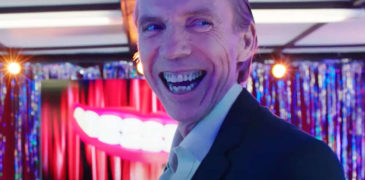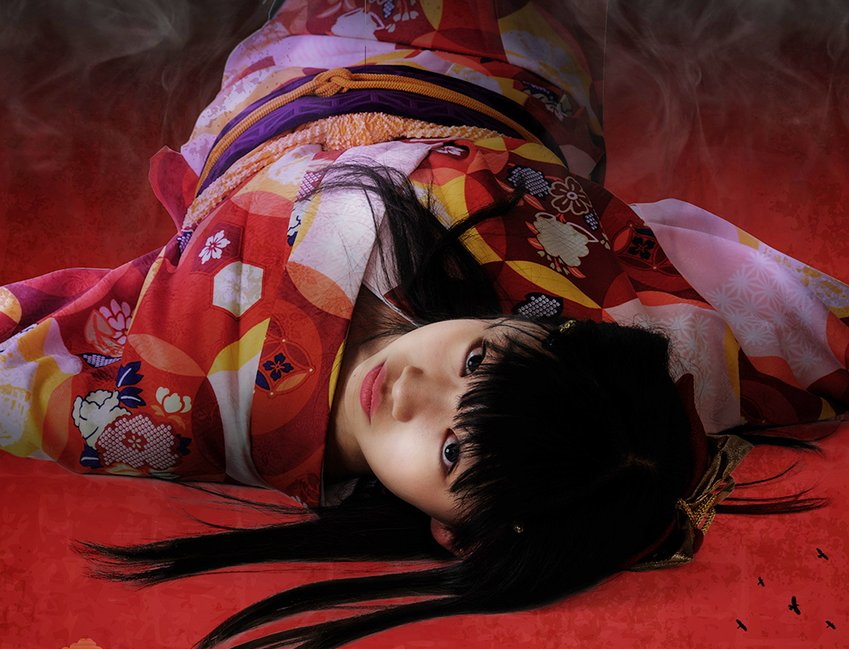
Fans of serialized tokusatsu shows or classic anime OVAs from the 80s and 90s will find themselves right at home checking out this entry at the 2021 Japan-Filmfest Hamburg (JFFH). The story follows the adorable but cold Kirin, a girl who travels across Japan seeking other yokai that have become overwhelmed with evil intentions so that she can devour them. It’s perhaps a simple premise, but if it feels familiar that’s just because it is a concept that works well as a foundation to then riff around telling various stories. Unfortunately, the very same setup that gives it a lot of its appeal may also be the source of the film’s weakest points as well.
The story is presented as a series of several “episodes” divided by title cards. During the first, we even get an opening song with lots of cool shots the same way you’d expect from any anime. Most of these segments run close to 20 minutes so even pacing-wise you get the vibe of it being just several episodes airing back to back. Nominally, that means the first few episodes of a series. That comes with all the strengths and problems you would find if you sit down and decide to only watch, say, the first three episodes of something and then walk away. You get the premise and at least the general vibe, but things never really build to any greater revelation or meaning.
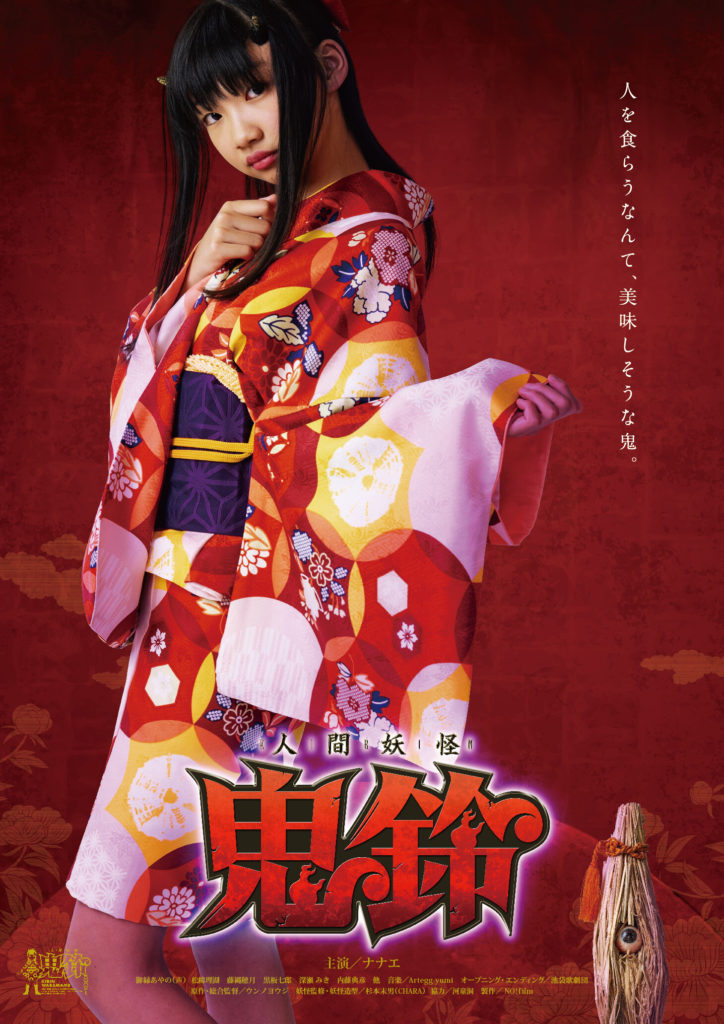
Yokai Girl Kirin is written and directed by Yoji Unno. While not prolific, he has several films to his name dating back as far as 2012 including a few that lean into horror and supernatural themes meaning that Kirin is definitely within his wheelhouse and it shows. The premise is easily the strongest element of the film and it’s a really great one. If this did get aired on television, I’m sure that I would be hooked from the first episode and easily along for the ride. However, as a film freed from any sort of censorship they are able to go a good bit further in the effects department with regards to gore and the more horrific moments of the story. This brought to mind some of the mature-leaning tokusatsu series out there such as Garo (2005). Though this film relies much more on traditional horror conventions than the sort of martial arts action that dominates “masked hero” style tokusatsu stories.
The titular Kirin is played by actress Nanae. She’s collaborated with Unno on a prior film and she does a great job as the character, so it seems like a good matchup for the project. It is perhaps a common trope in many anime, but the character embodies the archetype of the cute girl who has a very cold callous personality. Nanae is able to nail this sort of role perfectly and there’s enough clever direction at play that we’re able to see it used for some laughs without her having to break character at all. She’s joined in her quest by her brother, Waramame, who happens to be a Kasa-obake. If you’ve enjoyed any other Japanese media steeped with yokai then you’ve probably seen this sort of creature. It’s usually depicted as a ghostly umbrella with one eye.
And while we’re speaking about yokai we should also look at the fact that Kirin herself is one as well. While it traces back to the Chinese “qilin” in origin, the Japanese kirin is considered to hold the highest spot among mythological beasts. We don’t get a ton of backstory on her, unfortunately, so that bit of context might help explain both her overwhelming power and the focus on seemingly policing other yokai that get out of line and start committing evil acts. This also informs the tv-show style setup of the film. We get a story broken up into several “episodes” and each one generally follows the same sort of monster-of-the-week formula where Kirin and Waramame drift into a new area, uncover some sort of problem, discover that a yokai is involved, and then ultimately deal with the creature before continuing their journey.
One final character rounds out the recurring cast, a mysterious old woman that Kirin refers to as Kokuribaba; which also happens to be a yokai. The Kokuribaba is an old hag that tends to hide out in abandoned temples and is said to feed on human flesh. Our Kokuribaba here follows that formula as well. She shows up in two of the episodes trying to scam money and acquire some flesh to eat which she insists will keep her young. They play this to good effect in the second episode where we see her hair turn grey and her skin start to wrinkle before she is able to land a snack and get back to her old self. While technically she acts as sort of an antagonistic force for Kirin, her efforts come across as bumbling and she winds up being more of a nuisance at best or an enabler for the actual problem yokai at worst.
While describing those three characters, if you started to get some sense of familiarity, you’re not wrong. Their lineup and interactions pretty heavily mirror Shigeru Mizuki’s famous Gegege no Kitaro series. Wherein, Kitaro is a young yokai who helps out humanity when they fall under the misfortune of wayward yokai. He is assisted by his father, Medama-oyaji, who appears as a small singular eyeball yokai. They’re often forced to deal with Nezumi Otoko, a rodent-like half-yokai who is usually working up random schemes for his own convenience but is regularly more of a comical nuisance than an actual threat. We tread a lot of common ground in the film, but that’s not technically a bad thing.
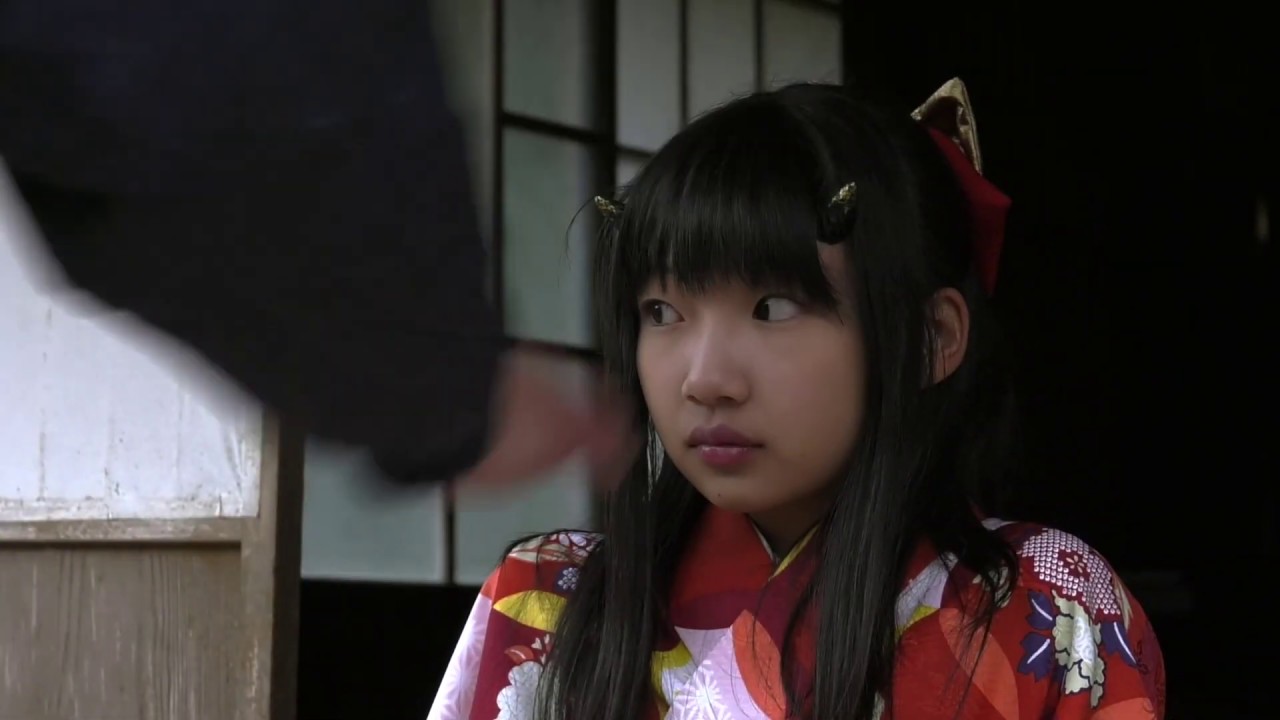
Where Kirin is able to stand out is with its ability to lean heavy into its horror elements. There are some truly great kills and gore gags spread throughout the film. People get devoured down to just bones and flesh chunks. One segment has a possessed woman getting stab-crazy using a knife with plenty of blood splatters to go around. For all its trappings like a television series, it is moments like these where you can see they were able to use the format of film to go beyond the usual limitations which would tone down this sort of production.
The actual lore that gets developed throughout is also quite interesting. In the first “episode” of the story, the yokai at hand is the Nuppehuhohu: a large mass of formless flesh that’s said to carry a rotting smell. Extrapolating on the lore, Kirin explains that they are generally harmless but that feasting on their flesh can extend one’s life letting them live forever adding that this particular one has been hounded so much by greedy people pursuing it that it has become filled with anger. When a yokai gets filled with negative emotions it can turn into an oni. Tracking with the actual lore, while often depicted as hulking ogre-like creatures oni can be considered a sort of demon. Kirin’s actual mission is to find yokai that have become oni and devour their evil essence purifying them back to their original state.
Some of the more tokusatsu-style elements come back into play in the execution of that mission. In each episode, once the oni has been discovered Kirin goes on the attack with a finishing move complete with its own special chant and background effects that feel no different than what you’ll see in a Kamen Rider show or any number of Magical Girl anime. The CG used for some of these special effects even land in line budgetarily speaking with what you can see at play in Ultraman or Super Sentai. Here, owing to the supernatural bent, Kirin’s finisher is for her brother to produce a Cursed Nail which she then uses a hammer to drive into the yokai and expel their evil essence as a meatball for her to devour. This is another cool blending of some traditional lore as there is a basis for the idea of nailing a curse to a tree to enact its power; which has cropped up in plenty of other manga and films like Eko Eko Azarak (1995).
Eko Eko Azarak may even be a useful point of comparison as those films adapted a very episodic style manga but managed to make the films feel more like full theatrical features instead. As mentioned earlier, these tv show-like elements bring as many problems as they do benefits. What you end up watching feels like the first three or so episodes of a long-running series. Maybe this is an unfair criticism, but I feel like I would have rather seen this as a tv show broken up individually into regular episodes. Moments where things seemed to drag a little or the more repetitious parts of the general episode formula get too samey would probably hit much differently spaced out week to week one episode at a time. Yet, television is its own mired swamp for production so maybe Yokai Girl Kirin could only ever exist in this format as an independent film.
So while we readily figure out what Kirin is up to, we never learn too much about her or any deeper motivations. We never get a sense of what’s driving her to act besides just wanting to eat. She never gets any development either. Nothing ever really challenges her and there’s no real escalation of stakes from one segment to the next. The first episode “Nuppehuhohu” is by far the strongest and the human story here is pretty touching and quite sad once it all shakes out in the end. The real problem is that there isn’t much in the following segments that hits the same height let alone exceed it.
In the second episode titled “Amabie” Kokuribaba goes to a strange area that seems like a village for yokai with a whole parade of phantasms and cool-looking monsters. This seems to suggest some sort of wider world for the yokai going on, but again besides a few interactions, we never learn more. The opening intro shows a really cool white dragon and I’m sad to say it never turned up in the film proper. Maybe it was just a reference as some depictions of the kirin use the form of a Chinese-style dragon, but the vibe gave me the expectation that it would likely be the climactic “boss” monster for the final story or some important character tied in with Kirin’s history.
That final story, titled “The Bloodthirsty Killer”, probably also needs a bit of focus as well. It’s easily the weakest segment and while there is a clever twist involved, it doesn’t alleviate how boring or random it feels. A madman is on a rampage killing people indiscriminately in the city, while Kirin wanders into an abandoned house in the countryside and makes some reluctant peace living with a squatter sharing the place. Eventually, their paths cross and it gels into something more but it feels very disconnected and a huge case of just being in the right place at the right time. Maybe, as a kirin, that is one of her powers but it’s never made overtly clear.
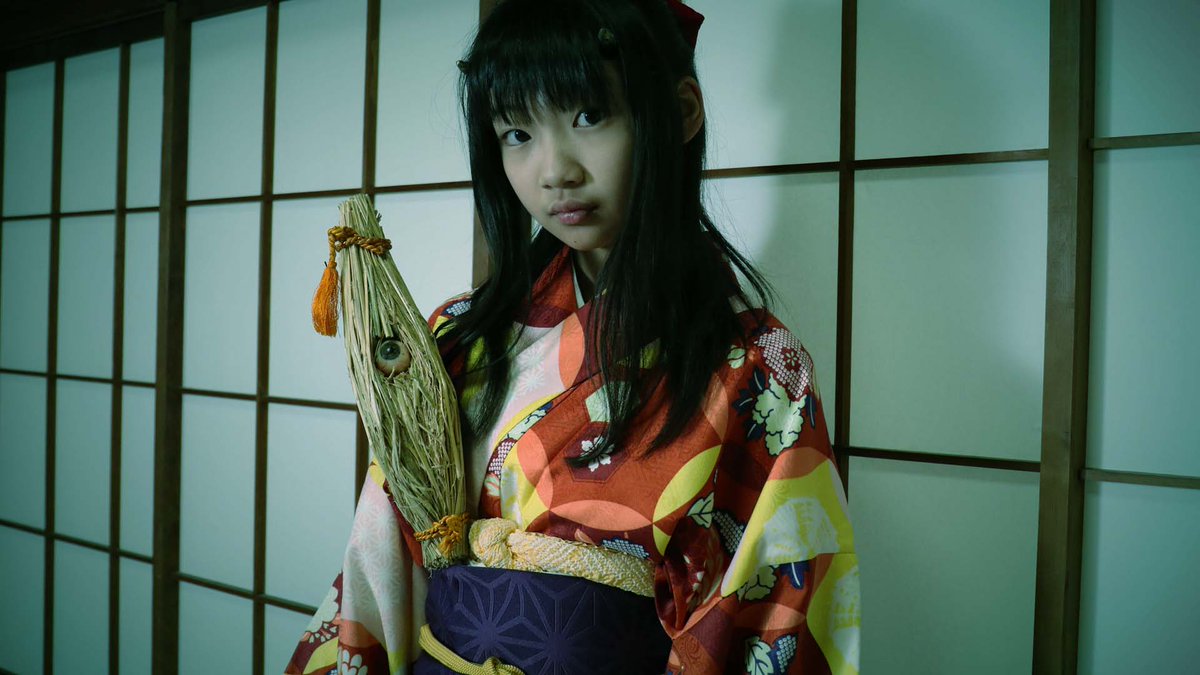
Worse still, there’s even a wide shot as the killer approaches the abandoned house where a boom mic is clearly in the frame at the top corner which is definitely one of those record scratch kind of moments. I don’t want to bully the movie for it, but it was painfully noticeable. To their credit, however, I think the main reason this stood out so much is that the presentation throughout the rest of the film is so strongly composed that this minor slip hits much harder than it should. In the end, it’s clear Kirin’s quest will continue on but that’s beyond the scope of this film.
And that’s why my other big point of comparison is to anime OVAs of the 80s and 90s that burned strong for a few episodes then vanished into obscurity. By the nature of being an OVA, usually, their continued production was predicated on the sales for each episode. Since the first episodes of most stories told in the format usually spend that time establishing the formula before complicating things and there’s a general diminishing return in sales episode to episode, plenty of series ran for 2-4 episodes and then just stopped with no continuation or resolution. Kirin has that exact same feel and definitely leaves you wanting more.
Is that really a problem? I am not too sure. I love the concept wholeheartedly. I think anyone with a fondness for yokai and Japanese mythology will find plenty to enjoy here. Any enthusiasts of tokusatsu should look into it to see someone using these elements to tell a story beyond the standard “masked hero” style of approach. Though we don’t get a lot of depth for Kirin, Nanae gives a great performance in the role. I want to know more about Kirin and the society of yokai she interacts with. I want to see her challenged and have some growth or development as a character. I definitely want that dragon promised in the opening. I just want to see more. When that’s the worst complaint you can feel compelled to give, maybe that’s not such an issue in the end.
Yokai Girl Kirin originally streamed as part of the 2021 Japan-Filmfest Hamburg (JFFH) lineup.

More Film Festival Coverage:
Black Mold is a 2023 American psychological horror film, written and directed by John Pata. The film stars Agnes Albright and Andrew Bailes as two Urbex photographers, Brooke and Tanner,… Almost entirely free of dialogue, Looky-loo (2025) gives viewers the view from a killer’s own eyes as he stalks and plans multiple murders. The nameless killer, gains confidence with each… Meeting your partner’s family for the first time can be a drag, having to find out how well you get along in the family dynamic or learn some truths you… Blood in the Snow (BITS) is a Toronto-based horror film festival that is presenting its 9th annual line-up at the Royal Alexander Theatre from November 18-23, 2021. Festival director Kelly… There aren’t a lot of production studios left that are devoted to horror. The two big ones that come to mind for me are Sam Raimi’s Ghosthouse Pictures and Blumhouse…. BITS and Bytes is a collection of short horror films screening on the third night at Blood in the Snow Film Festival 2024, including several from series that viewers will…Black Mold (2023) Film Review – Break the Mold [FrightFest]
Looky-loo (2025) Film Review – Through the Eyes of A Killer [Unnamed Footage Festival 7]
Homebound (2021) Film Review – Family Secrets Can be Deadly
Blood in the Snow Film Festival BITS 2021- Short Films Spotlight
Bingo Hell (2021) Film Review – You Win, You Die!
Bits and Bytes Short Film Reviews – Blood in the Snow Film Festival 2024
Dustin is a potentially overqualified office worker who has a lifelong love and fascination with Japan and all things Horror. With a bachelor’s in English Literature and a master’s in Library Science, he devotes way too much time to researching and thinking critically about the media he enjoys. When not celebrating trashy horror films, anime, and idol music, he can be found raving about all things genre cinema as a co-host on Genre Exposure: A Film Podcast or indulging a passion for storytelling through tabletop roleplaying games.
![Black Mold (2023) Film Review – Break the Mold [FrightFest]](https://www.grimoireofhorror.com/wp-content/uploads/2023/08/Black-Mold10-365x180.jpg)
![Looky-loo (2025) Film Review – Through the Eyes of A Killer [Unnamed Footage Festival 7]](https://www.grimoireofhorror.com/wp-content/uploads/2024/03/Look-Loo-2023-review-365x180.jpg)


